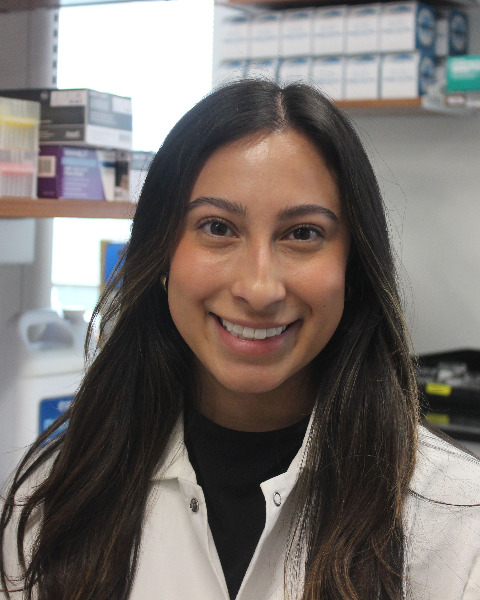Biomaterials
Biomaterials - Poster Session E
P9 - Nitric Oxide Releasing Slippery Organogel Coating for Biomedical Application
Saturday, October 11, 2025
10:00 AM - 11:00 AM PDT
Location: Exhibit Hall F, G & H

Catherine Cicci
Undergraduate Student
University of Georgia, United States- HH
Hitesh Handa
Professor
University of Georgia, Georgia, United States 
Isabel Martinez, BS
Graduate Student
University of Georgia, United States
Presenting Author(s)
Last Author(s)
Co-Author(s)
Introduction: : Medical devices frequently encounter surface-related issues, such as bacterial adhesion and thrombosis, which can lead to serious infections or reduced device performance. One promising strategy to combat these complications is the creation of slippery, anti-fouling surfaces using organogels. These specialized gels can be infused with oil to resist the accumulation of biofilms by reducing friction at the material surface and preventing protein and bacterial adhesion. The organogels in this study are fabricated using isophorone diisocyanate and bis(3-aminopropyl) terminated polydimethylsiloxane, which are chemically cross linked to form a flexible, durable matrix. Infusing this matrix with silicone oil introduces a slippery property which is promising for use in medical devices to overcome adhesion of biofoulants. The underlying RTV substrate is further enhanced by embedding S-nitroso-N-acetylpenicillamine (SNAP). SNAP is a nitric oxide releasing molecule which provides active biological functions to complement the passive ones the organogel offers.
Nitric oxide is a free radical gasotransmitter capable of eliciting nitrosative and oxidative stress on bacterial membranes, disrupting cellular signals of pathogens, and preventing them from forming biofilms. Additionally, as an antithrombotic agent, NO reduces platelet activation and adhesion. SNAP is a well-studied NO donor that releases NO in the presence of heat, light, and metal ions. This makes it ideal for embedding in medical devices, ensuring localized NO delivery.
Materials and
Methods: : The material system was optimized to enhance its performance for potential medical applications. Swelling studies were performed to characterize the gel’s absorbent behavior and assess its structural stability. Surface wettability and mobility were also observed—water contact angle and sliding angle measurements were conducted to assess the degree of slipperiness. SNAP leaching was quantified using UV-Vis spectroscopy to monitor release and analyze molecular stability in the RTV. Nitric oxide (NO) release was evaluated using the Griess assay, proving the material’s capacity for sustained NO delivery under physiological conditions. Self-healing studies were done to show the ability of the organogel to recover after mechanical damage. Future studies will focus on biological assays to investigate antibacterial and antithrombotic efficacy. Durability testing will be conducted to examine material integrity and functionality.
Results, Conclusions, and Discussions:: Swelling studies revealed that the RTV and organogel infused with 100 cSt silicone oil exhibited ideal swelling behavior and retention without compromising surface behavior. This material demonstrated complete self-healing capacity after 24 hours when the organogel was present, highlighting the effectiveness of the gel system in recovery from damage, which is a highly desirable characteristic in medical applications. Nitric oxide release, studied using the Griess assay, was highest in the slippery combinatorial material. This release profile aligned with the SNAP leaching measurements obtained via UV-Vis spectroscopy, which found that the RTV-SNAP samples (with no organogel or silicone oil component) had the highest SNAP leach rate, while incorporation of the organogel and silicone oil reduced leaching, resulting in longer lasting localized NO release.
Surface mobility observations revealed that the RTV-SNAP samples did not exhibit sliding behavior under tilt conditions, while the samples infused with silicone oil began sliding at an angle of 8 degrees. Despite these differences, water contact angle was similar for all samples, suggesting similar surface hydrophobicity. These results reinforce the idea that the infusion of the organogel and silicone oil into RTV-SNAP increases its NO performance and its potential for self-healing. The material shows promise for further biological and durability testing to further prove its applicability in the medical field.
Acknowledgements and/or References (Optional): : This material is based upon work supposed by a National Science Foundation Research Experiences for Undergraduates (REU) site program under Grant No. 2244253
